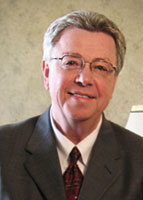2009 CEOs Who 'Get It'
 Larry C. Bryant
Larry C. Bryant
Commissioner
South Carolina Vocational
Rehabilitation Department
The South Carolina Vocational Rehabilitation Department is a state government agency that maintains 26 industrial-based training centers, as well as area offices, sub-offices and statewide facilities, for a total of 70 physical locations. Based in West Columbia, the agency employs 1,420 workers.
Why is safety a core value at your agency?
Ours is a South Carolina state agency whose mission is to enable eligible citizens with disabilities to prepare for, achieve and maintain competitive employment. Many of those disabilities are the result of injuries from preventable accidents, so safety is a core value with us. We are committed to providing a safe work environment for our clients and our employees.</p> <p>Understanding the importance of safety also helps us with our business relationships. Because businesses know we value safety as highly as they do, they are more apt to hire our clients and use our outsourcing services. Additionally, of course, our lost time and insurance costs are lower because our employees and clients are thinking and practicing safety.
How do you instill a sense of safety in your employees on an ongoing basis?
We make it a part of what’s expected of every employee. We “institutionalize” it, so to speak. We conduct annual safety inspections at all of our facilities, and each facility receives a safety score, which supervisors are held accountable for on their performance appraisals.
Employees and clients alike go through safety training. It teaches employees the importance of safety in the workplace, and our clients learn that safety is part of a productive work environment.
We have a safety and risk management specialist who oversees 27 safety coordinators who, in turn, monitor safety in all of our 70 facilities. The safety and risk management specialist has completed OSHA 30-hour training and OSHA 501 training, and each of the safety coordinators participates in OSHA 10-hour training.
Safety coordinators, while responsible and accountable for their individual workplaces, are encouraged to delegate safety duties to other employees, giving each employee a “piece” of the safety program. This makes it more likely that required training, drills and plans will be completed on time, and also gets employees thinking in terms of safety.
What is the biggest obstacle to safety in your workplace, and how do you overcome it?
Complacency is our biggest obstacle. We are constantly emphasizing the importance of eliminating shortcuts and using the proper tools for the job. For example, we don’t want people standing on a desk chair to change a lightbulb when they need to get a ladder. We want people to be aware of the consequences of such actions without having to suffer those consequences.
How do you measure safety? What are the leading indicators that show you how safe you are, and where do you see room for improvement?
- Safety goals appear on supervisors’ performance appraisals, making them ultimately responsible for safety.
- Our facilities have always been monitored to ensure productivity, compliance and customer service goals are met. Safety has been given equal weight with those measures.
- Our safety and risk management specialist monitors violations to avoid repetition of past mistakes. He also monitors Experience Modifiers for each facility with an emphasis on reducing them for all. Safety violations must be corrected within 30 days.
- We monitor accident occurrences using an agency-wide database to recognize potential accident trends, and we conduct training to prevent similar injuries.
Post a comment to this article
Safety+Health welcomes comments that promote respectful dialogue. Please stay on topic. Comments that contain personal attacks, profanity or abusive language – or those aggressively promoting products or services – will be removed. We reserve the right to determine which comments violate our comment policy. (Anonymous comments are welcome; merely skip the “name” field in the comment box. An email address is required but will not be included with your comment.)

